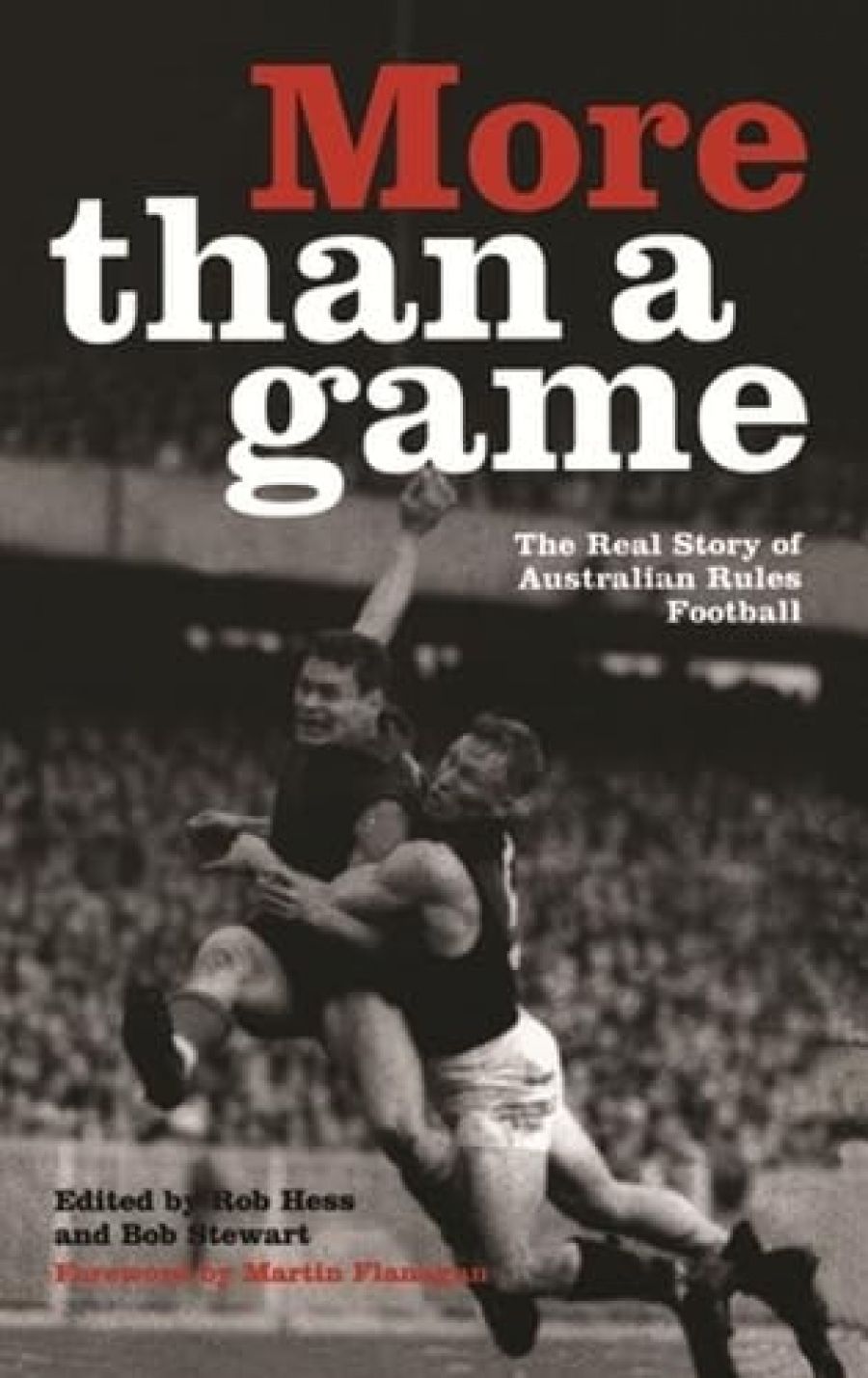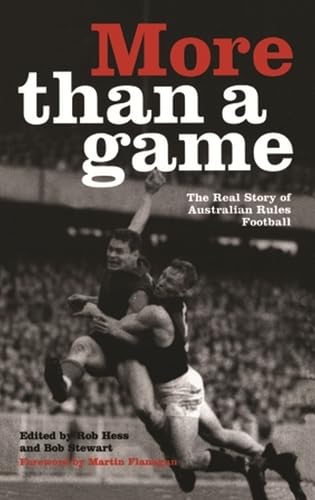
- Free Article: No
- Contents Category: Sport
- Review Article: Yes
- Article Title: Collision Sport
- Online Only: No
- Custom Highlight Text:
In his spirited foreword, well-known football writer Martin Flanagan notes that ‘More Than a Game is in the best traditions of Australian football writing. It is unauthorised, a necessary virtue given the blurring of the Australian media with the corporate interests behind football.’ Flanagan also knows that writing about football in Australia has become a dignified and scholarly pursuit. Still, football as representing the verities of life is a powerful and relatively new symbol. As the editors and contributors amply demonstrate, Australian Rules history has been measured out in tribal rivalries and violence. These two themes, along with many contemporary evaluations, are explored in detail.
- Book 1 Title: More Than a Game
- Book 1 Subtitle: The real story of the Australian Rules Football
- Book 1 Biblio: Melbourne University Publishing, $32.95pb, 304pp
- Book 1 Cover Small (400 x 600):

- Book 1 Cover (800 x 1200):

Traditionally, Australian Rules as a ‘collision sport’ has had a strong masculinist following. The notion of the ‘man’s game’ goes some way to explaining its inherent violence. Although the violence is still there, as each Monday night at the tribunal attests, the game of football has changed significantly. Each of the six contributors is at pains to put football in its historical and cultural context. The various shifts in how the game is played and observed are well described, and there is considerable historical content.
Tracing the development of the rudimentary game – from which the modern spectacle has emerged – Robin Grow, in ‘From Gum Trees to Goalposts, 1858-1876’, gives a fine overview of football’s origins. The uneasy matches played during the gold rush gave rise to the development of football fraternities by the 1860s, which resulted in the prevalence of violence in Australian Rules. In the 1860s the point of the game was often to ‘inflict summary vengeance’. (Some would argue that not much has changed.) The editors contextualise the extensive coverage in the book of the tensions between the old Victorian Football Association and the Victorian Football League, which was created in 1896.
In addition to the sequential development of the game, the book covers much ephemera and apocryphal information, which will appeal to the serious student of Australian Rules. Of broader interest are the details of how some clubs, in the days before salary capping, infringed VFL rules. During World War I, for example, Carlton contributed nothing to the VFL patriotic fund. The book features various personalities and their particular claims to fame, such as Footscray’s Ted Whitten, who is reputed to have invented the now-outlawed flick pass.
Although the two world wars interrupted the playing of Australian Rules, it was not long before the game reasserted itself as a vital part of Victorian cultural life. Its movement into the northern states – one of the defining elements of the Australian national game – is given due attention. The commercialisation of football, which developed from having a national audience, is also discussed fully.
More Than a Game is most valuable in highlighting the code’s many stakeholders, including players, corporate sponsors, supporters and club administrators. The impression is clear: the game itself is no longer sufficient: Australian Rules is now about how much money each club can make. Football for profit is the most significant and enduring shift in the modern game. It is a situation that Dave Nadel describes in his essay, ‘The League Goes National 1986-1997’, in these terms: ‘The teams are no longer representatives of the local area as they were during the first century of Australian football. They now represent corporate entities. That is what the changes of the 1980s and 1990s were all about.’
While the book provides a wide historical sweep of the development of football, it is the material on the cultural durability of Australian Rules that is likely to be of greatest interest to readers. Curiously, even in these days of video-induced physical restraint, there are still resonances with the past. Consider, for example, the match between Collingwood and North Melbourne, two of Melbourne’s definitive working-class teams, on 25 July 1896. The umpire had to be led from the ground under protection. Moreover, it was noted in the Argus that women, ‘on some grounds actually spit in the faces of the players as they come to the dressing rooms’.
More Than a Game is an important addition to the growing body of work about Australian Rules, but this current version is a reprint and feels somewhat dated. It is distracting, for instance, to read about the potential of the Docklands stadium. The book needs a revised final chapter and epilogue. Apart from this quibble, More Than a Game is both entertaining and informative.


Comments powered by CComment